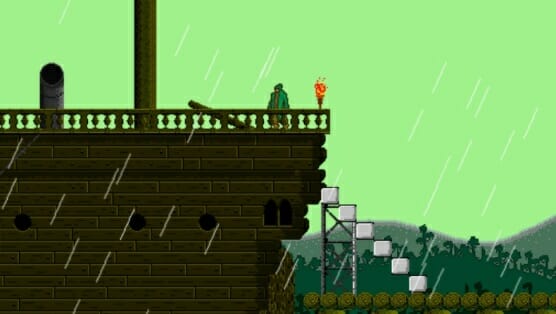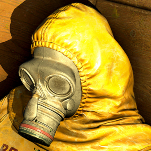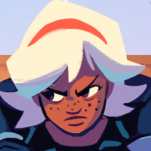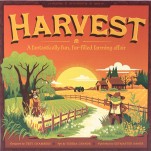The Waste Land: Eliot’s Quest

Fledermaus’s The Waste Land is not a direct adaptation of T.S. Eliot’s 1922 poem about, among other things, London and ghosts and terrifying dust and red rock shadows—though Eliot’s quoting Baudelaire’s Hypocrite lecteur! accusation could mark it as a precursor to the recent AAA “you, player, are the real monster!” theme. If you’re looking for connections, I mean. Any Modernist poetry readers, please forgive me in advance for all my misrepresentations of the work that can support semester-long undergraduate seminars.
It’s a weird combination, at least structurally. Since videogames are software, there’s only so much of their linearity that can be fractured: code is much more rigid than other languages. The computer has to be able to understand it so that the player can see their layer of the game. And while you do have moments where that layer appears to break down (a trip through a desert tower, for instance), the underlying material of the game is still highly structured.
Set aside structure and look at theme, and things come a bit more together. If you want to do isolation, you could look to something a lot worse than Metroid for inspiration. The Waste Land is a 2D exploration platformer. You control King Zylon, who runs and jumps and fights and collects upgrades that help him run and jump and fight better. Sometimes those upgrades let you get into new areas, sometimes they let you more easily get through old areas.
Zylon was on a hunting trip and there is an animal that sort of looks like a llama with antlers but maybe is kind of an abstract deer? After you kill the animal, everything goes bad and Tiresias (yes, that old blind man) explains in detail its symbolic nature and how Zylon’s actions have doomed the world and he had better go save it.
Many games of this style structure their world like Mother Metroid, two dimensional worlds where the top of the map screen and the top of the play screen are both above. The Waste Land’s map screen is a little different. It affects the look of an antique map, paths through the wilderness connecting dots. The top of the map is not above, but north. It’s drawn along a different axis.
If a dot has two paths coming out of the right side, one going south and one going north, when you reach the right side of the screen, that dot represents there will be two exits: one going up and one going down. Space abstracts and bends to fit the needs of play and the looks of maps.
Those dots are the screens on which you play are the building blocks of the world and of the game’s memory. So long as you’ve not left one (walked off to the side, entered a door), the enemies you’ve killed will remain gone. The environments are types—desert, port town,swamp, frozen mountain, Japan (representations of culture and gender may have also been influenced by Eliot…)
Its 8-bit bones make combat not very elaborate. No block or dodge button, just your basic movement to get in close enough to hit with a sword or an arrow and then back out of the way. You make do with jump, attack and general movement: no context-specific button actions.
There are no experience points, and the more health you have the more enemies seem to drop items that cause damage more often than they heal. Given the quickness with which they respawn, when you’re weakly-weaponed it’s quicker to run and jump than it is to fight. It’s a slow pace when most enemies takes four or five hits to kill. Once they do, they seep and spew technicolor blood and bellies burst and they fade away and then you wait to see if they drop the health you need because you haven’t seen a save point in seven screens.
You don’t keep those health items—there’s no inventory. This all compounds the motivation to avoid rather than attack. Fortunately, you get that wonderful platformer physics-defining action, the double-jump, fairly early on, making it much easier to get by all but the large path-blocking enemies and the faster flyers that harry you across a screen.
-

-

-

-

-

-

-

-

-

-

-

-

-

-

-

-

-

-

-

-

-

-

-

-

-

-

-

-

-

-

-

-

-

-

-

-

-

-

-

-









































